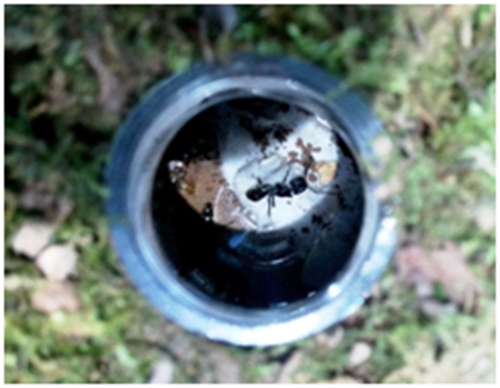Foraging in termites, and in most ants, is a collective task during which the risk of predation is high. While basic chemical and primary behavioral analyses have shown that ants may detect termite trail and colony odors as well as termite alarm pheromones, the detection of termites by ants through eavesdropping remains less well understood.
Researchers from Kunming Institute of Zoology and Xishuangbanna Tropical Botanical Garden (XTBG) conducted a study to seek the effects of ant eavesdropping on the variational trail pheromone of its termite prey.
The researchers compared several innate signals of fungus-growing termites. They showed how the specialized ant predator, Odontoponera transversa(Hymenoptera: Formicidae: Ponerinae), eavesdropped on three common fungus-growing termites from Asia: Odontotermes yunnanensis, Ancistrotermes dimorphus and Macrotermes yunnanensis (all Termitoidae: Termitidae: Macrotermitinae).
During the observation of foraging termites, the workers quickly located and covered a new suitable piece of wood with mud-sheets in order to protect themselves during foraging.
Ants showed significantly higher attraction to vials with living termites (workers and soldiers) compared with control vials. The most commonly predated termite, O. yunnanensis, was able to regulate the trail pheromone component ratios during its foraging activity.
Chemical analyses showed two specific compounds at the surface of the sternal gland of workers in O. yunnanensis, (3Z)-dodec-3-en-1-ol (DOE) whereas (3Z,6Z)-dodeca-3,6-dien-1-ol (DDE).
Their lab experiments clearly showed that ants were attracted to all samples containing DOE and DDE at all studied quantities.
The ants used the trail pheromone information as an indication of suitable prey abundance, and regulated their behavioral responses based on the changing trail pheromone component.
The eavesdropping behavior in ants therefore led to an arms race between predator and prey where the species specific production of trail pheromones in termites is targeted by predatory ant species.

